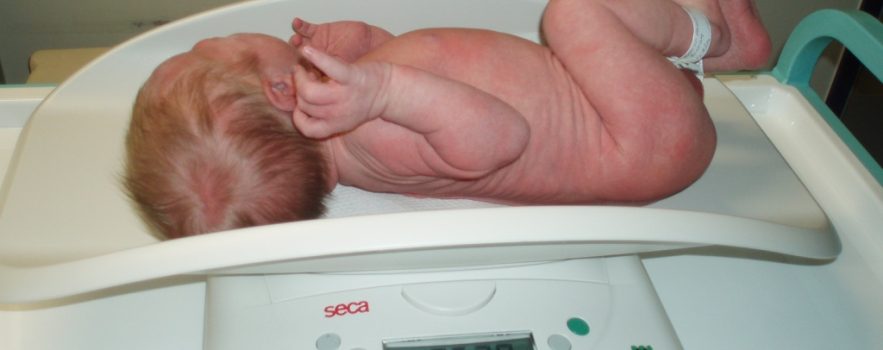For many years, studies have been reported that birth weight can leave patterns of higher or lower risk for diabetes and heart disease in later life 1. But we have not understood why this happens and such findings have not impacted on health care. Some investigators have even questioned whether these risk patterns are real or are statistical artefacts2,3. Our new findings4 now robustly show that many biological processes that increase birth weight in babies also protect from diabetes, high blood pressure and heart disease in adults – looking at it the other way round, processes that lower birth weight appear to be harmful also for many later life diseases.
In a very large network of 40 studies from around the world involving 150,000 participants, we and our collaborators identified 60 areas of the human genome associated with differences in birth weight. Where we had information from both mother and baby, apart from a few examples, it was the baby’s genes that appeared to influence birth weight rather than the mother’s. It isn’t a huge surprise to find that the baby’s genes influence birth weight. But what is remarkable is the large extent of overlap between the genetic regions that influence birth weight and those that influence risks of disease in adults.
We know that slow fetal growth and low birth weight lead to poor health outcomes around the time of birth5. Recent findings from the Cambridge Biomedical Research Centre show the value of ultrasound scans in pregnancy to identify small babies and this will help to inform their safe timing and type of delivery6. But we know less about how to prevent low birth weight.
Globally, in developing countries, undernutrition and stunted height of the mother are leading causes of fetal growth restriction7. In the UK and other developed countries, health professionals look out for and treat high blood pressure in pregnant mothers, and mothers should avoid smoking, or at very least reduce smoking during pregnancy5. But apart from those specific examples, which explain far less of the variability in birth weight than genetic differences, we know little about how to improve the growth of small babies before they are born.
The biological mechanisms identified by these new genetic studies will hopefully lead to future ways to help poorly growing babies during pregnancy – and it is remarkable to imagine that those same mechanisms may also help to treat or prevent later life diseases.
If you are interested in learning how our new study untangled the contributions of the mothers and baby’s genes to the birth weight and disease in later life, my colleagues Dr Rachel Freathy of the University of Exeter and Professor Mark McCarthy at the Uiversity of Oxford have written an excellent online article “Birthweight and later life disease: unravelling genetic effects of child and mother” discussing this.
Dr Ken Ong
References:
- Barker, D.J.P. Mothers, babies and disease in later life (2nd edition), (BMJ Publishing Group, London, 1998).
- Huxley, R., Neil, A. & Collins, R. Unravelling the fetal origins hypothesis: is there really an inverse association between birthweight and subsequent blood pressure? Lancet 360, 659-65 (2002).
- Tu, Y.K., West, R., Ellison, G.T. & Gilthorpe, M.S. Why evidence for the fetal origins of adult disease might be a statistical artifact: the “reversal paradox” for the relation between birth weight and blood pressure in later life. Am J Epidemiol 161, 27-32 (2005).
- Horikoshi, M. et al. Genome-wide associations for birth weight and correlations with adult disease. Nature, published online 28 September 2016.
- RCOG. Green-top guideline no. 31: the investigation and management of the small-for-gestational-age fetus, (Royal College of Obstetricians and Gynaecologists Press, London, 2013).
- Sovio, U., White, I.R., Dacey, A., Pasupathy, D. & Smith, G.C. Screening for fetal growth restriction with universal third trimester ultrasonography in nulliparous women in the Pregnancy Outcome Prediction (POP) study: a prospective cohort study. Lancet 386, 2089-97 (2015).
- Black, R.E. et al. Maternal and child undernutrition and overweight in low-income and middle-income countries. Lancet 382, 427-51 (2013).

 MRC Epidemiology Unit
MRC Epidemiology Unit